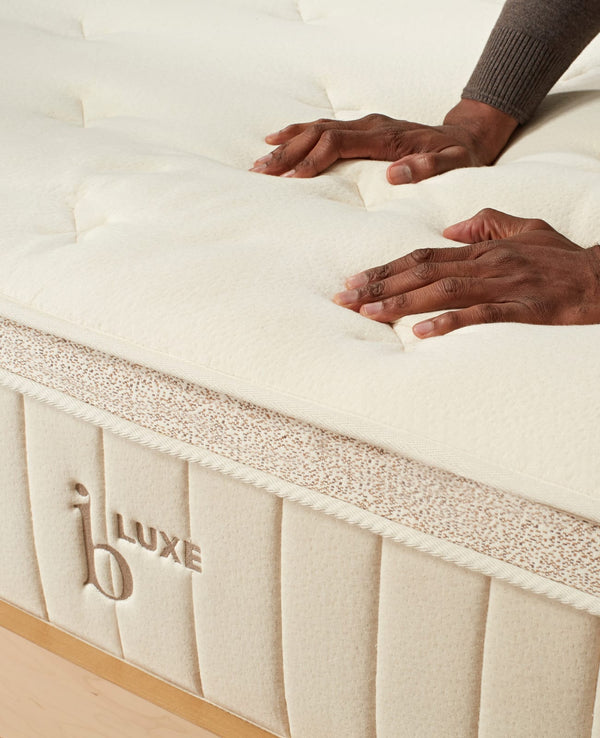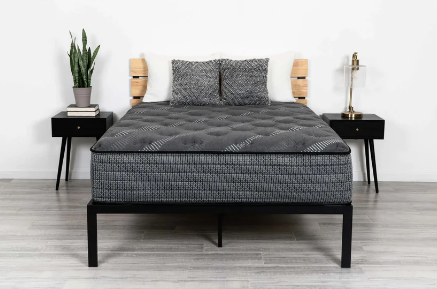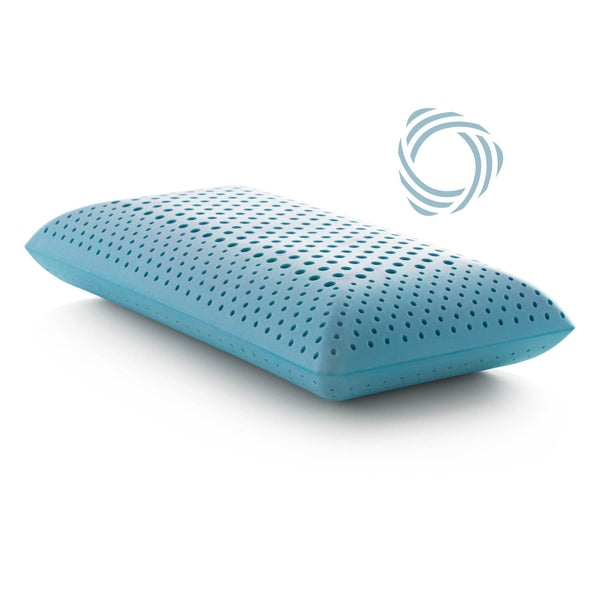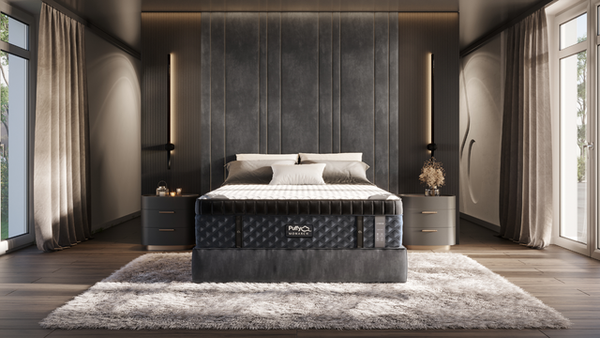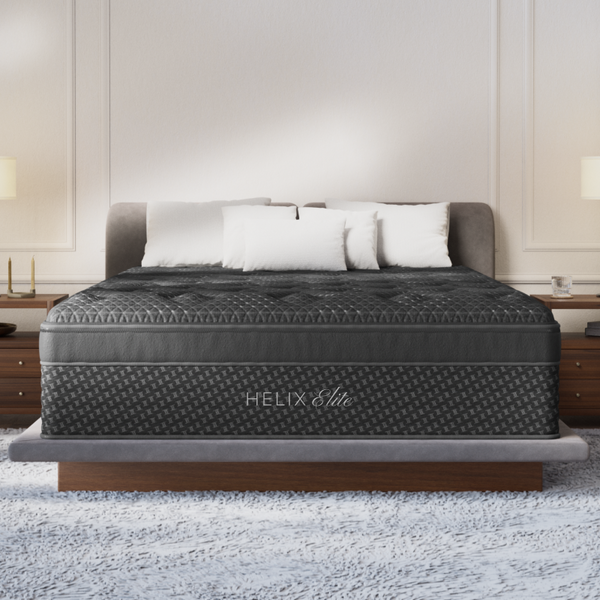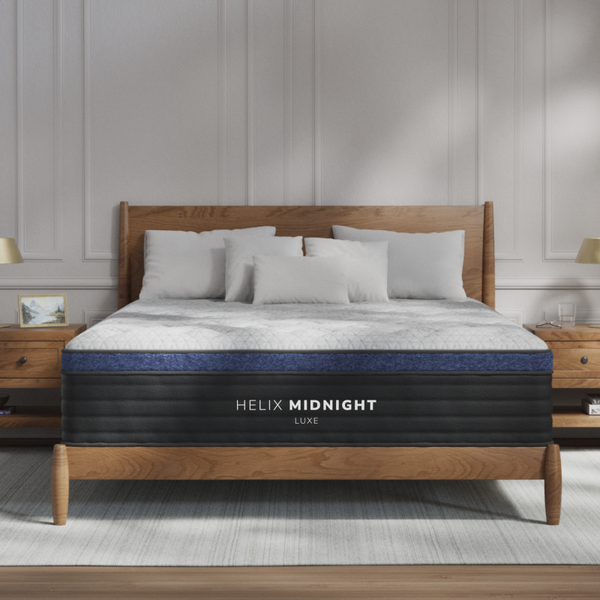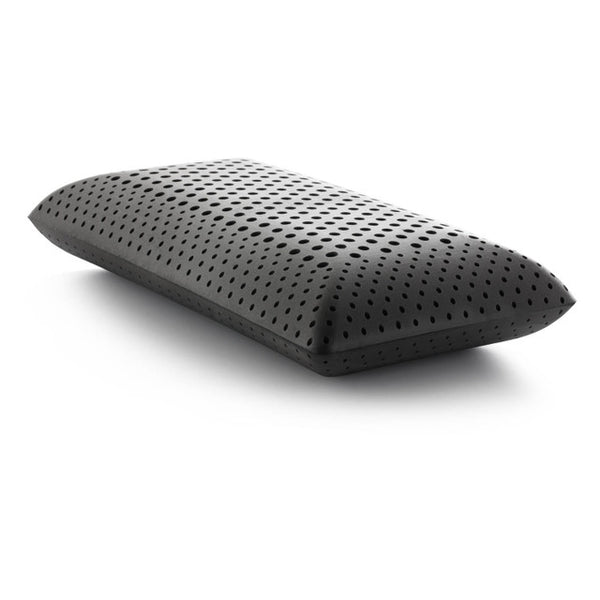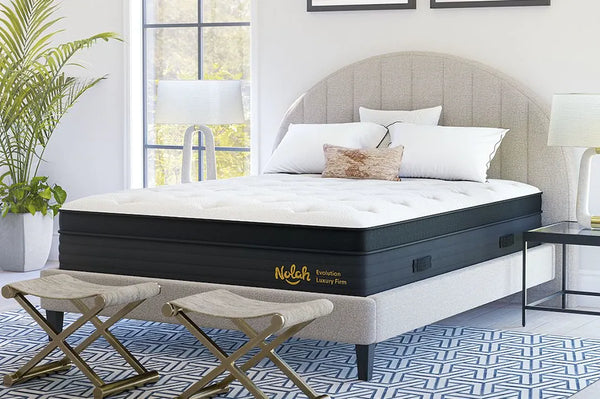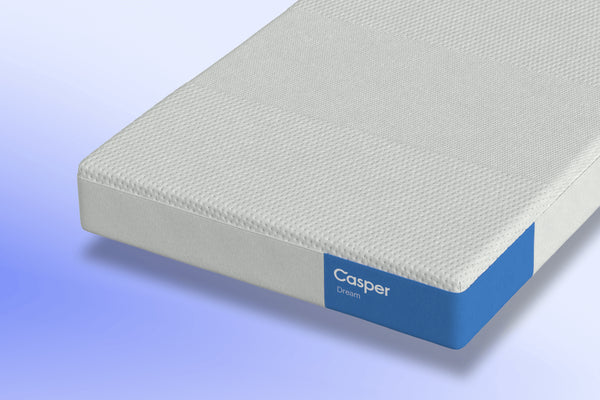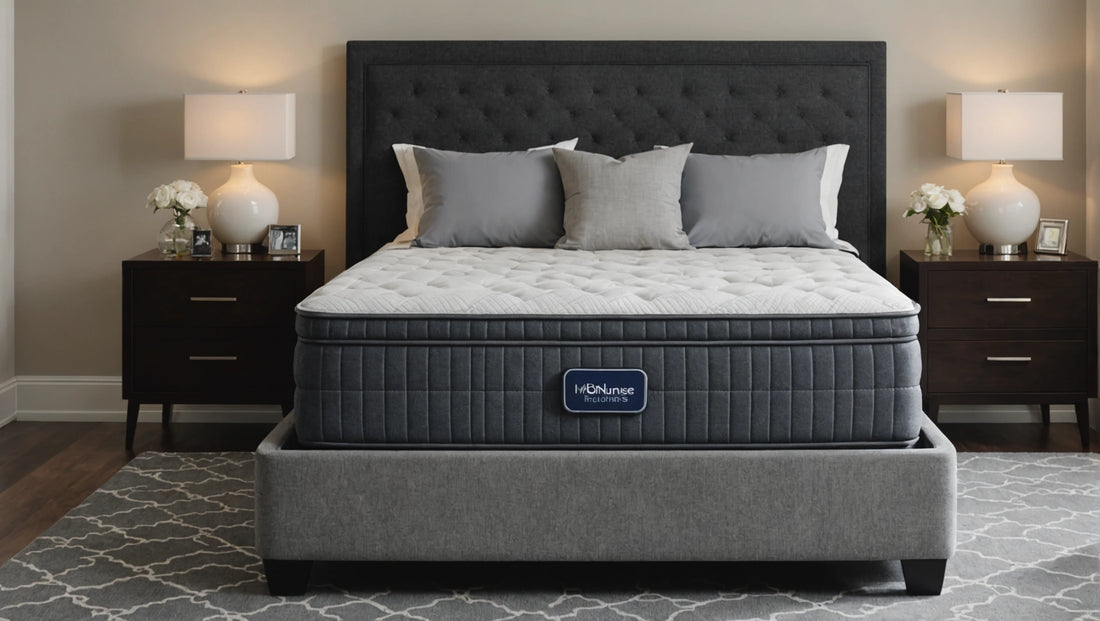

Are you torn between investing in a Sleep Number bed or sticking with a traditional mattress? The debate over Sleep Number beds versus traditional mattresses has been a hot topic in the world of bedding. Each option offers unique features and benefits that cater to different preferences and needs. In this discussion, we will delve into the key differences between Sleep Number beds and traditional mattresses to help you make an informed decision on which might be the better choice for your sleep quality and overall comfort. By exploring factors such as customization, support, durability, and overall sleep experience, we aim to provide you with a comprehensive comparison that will guide you in selecting the ideal option for your specific sleep requirements. Join us as we unravel the mysteries behind these two popular bedding choices and discover which one reigns supreme in the realm of restful slumber.
Understanding Sleep Number Beds
When it comes to getting a good night's sleep, the right mattress can make all the difference. One innovative option that has been gaining popularity is the Sleep Number bed. This type of bed is designed to provide personalized comfort and support through its unique technology. In this section, we will delve into the key aspects of Sleep Number beds to help you understand why they are a popular choice for many consumers.
Explanation of Sleep Number Technology
One of the standout features of Sleep Number beds is their use of technology to offer customizable firmness settings. Each side of the bed has its own air chamber, allowing users to adjust the firmness level to their liking. By simply inflating or deflating the air chambers, individuals can find their ideal level of comfort and support. This technology is especially beneficial for couples who may have different preferences when it comes to mattress firmness.
Benefits of Adjustable Firmness Levels
The ability to adjust the firmness level of a mattress can have a significant impact on sleep quality. With a Sleep Number bed, users have the flexibility to change the firmness setting based on their changing needs. Whether you prefer a softer feel for relaxation or a firmer surface for better spine alignment, having control over the firmness level can help promote better sleep and alleviate discomfort.
Personalized Comfort Settings Overview
In addition to adjustable firmness levels, Sleep Number beds also offer personalized comfort settings. Users can take advantage of features such as SleepIQ technology, which tracks sleep patterns and provides insights to help improve overall sleep quality. By analyzing data such as heart rate and movement during sleep, individuals can make informed decisions to enhance their sleep experience.
Enhanced Sleep Quality
Sleep Number beds are designed to enhance sleep quality by providing a customized sleep experience. The ability to adjust firmness settings ensures that users can find their optimal comfort level, leading to better relaxation and reduced tossing and turning during the night. This personalized approach to sleep can result in improved overall sleep quality and a more restful night's rest.
Health Benefits
The personalized comfort and support offered by Sleep Number beds can also have positive effects on health. Proper spinal alignment, which can be achieved by adjusting the firmness level of the mattress, is essential for reducing aches and pains. Additionally, improved sleep quality can contribute to better overall health by boosting immunity and enhancing cognitive function.
Sleep Number Bed Models
Sleep Number offers a range of bed models to suit different preferences and needs. From classic designs to more advanced models with added features like temperature balancing technology, there is a Sleep Number bed for every sleep style. Exploring the various models available can help consumers find the perfect fit for their sleep preferences and lifestyle.
Sleep Number beds are a popular choice for those seeking a personalized and customizable sleep solution. By combining innovative technology with adjustable firmness levels and personalized comfort settings, Sleep Number beds offer a unique sleep experience tailored to individual needs. Whether you prioritize enhanced sleep quality, improved health benefits, or simply a more comfortable night's rest, a Sleep Number bed can help you achieve your sleep goals.
Advantages of Sleep Number Beds
Improved Sleep Quality:
Sleep Number beds allow users to adjust the firmness and support level of their mattress, leading to a more comfortable sleep experience. This customization can help individuals find their ideal sleeping position, resulting in better quality sleep. The ability to personalize the firmness of the mattress to suit individual preferences ensures that users can enjoy a restful night's sleep, promoting overall well-being and vitality.
Enhanced Support and Pressure Relief:
The innovative design of Sleep Number beds, which allows for the adjustment of firmness in different areas of the mattress, provides targeted support to various parts of the body. This feature is particularly beneficial for individuals with specific pain issues or injuries, as it helps alleviate pressure points and reduce discomfort. By offering tailored support, Sleep Number beds contribute to a more comfortable and rejuvenating sleep experience.
Potential Health Benefits:
In addition to improving sleep quality and offering enhanced support, Sleep Number beds can provide various health benefits. The personalized support offered by these beds can lead to improved spinal alignment, which is crucial for overall spinal health and posture. Furthermore, by reducing pressure points and promoting better circulation, Sleep Number beds can help alleviate common sleep-related issues such as snoring and discomfort. The overall comfort and support provided by Sleep Number beds contribute to better sleep hygiene, which is essential for optimal health and well-being.
Investing in a Sleep Number bed is not just a choice for better sleep; it is a decision for prioritizing your health and overall quality of life. With its customizable features and potential health benefits, a Sleep Number bed is a valuable addition to any bedroom, ensuring that you wake up feeling refreshed and revitalized every morning.
Additional Information:
Beyond the core advantages discussed above, Sleep Number beds offer a range of features that make them a popular choice among individuals seeking a personalized and comfortable sleep experience. The dual adjustability feature of Sleep Number beds allows couples sharing a bed to customize their side of the mattress according to their preferences, ensuring that both partners can enjoy their ideal sleep environment without compromising on comfort. Additionally, Sleep Number beds often come equipped with sleep tracking technology that monitors sleep patterns and provides insights to help users optimize their sleep quality further. The combination of personalized comfort settings and advanced sleep monitoring features sets Sleep Number beds apart as a comprehensive solution for enhancing sleep quality and overall well-being.
Furthermore, the durability and longevity of Sleep Number beds make them a worthwhile investment in long-term sleep health. With high-quality materials and innovative design, Sleep Number beds are built to withstand regular use and maintain their supportive properties over time, ensuring that users can enjoy consistent comfort and restorative sleep for years to come. By choosing a Sleep Number bed, individuals are not only improving their immediate sleep experience but also investing in their future health and wellness.
The advantages of Sleep Number beds extend far beyond just a good night's sleep. By offering customizable comfort, targeted support, and potential health benefits, Sleep Number beds cater to the diverse needs of sleepers and contribute to overall well-being. Whether seeking relief from pain issues, enhancing sleep quality, or prioritizing long-term health goals, a Sleep Number bed stands out as a premium choice for those looking to transform their sleep experience and wake up feeling rejuvenated each day.
Traditional Mattresses Overview
When it comes to choosing a new mattress, there are various options available in the market. Traditional mattresses are one of the most common choices, known for their reliability and comfort. In this section, we will delve into the basic structure and materials used in traditional mattresses, compare them to Sleep Number Beds, and discuss their limitations in customization.
The Anatomy of Traditional Mattresses
Traditional mattresses are typically constructed with multiple layers of materials that work synergistically to provide the necessary support and comfort for a restful night's sleep. These layers often include a foundation layer, comfort layers such as memory foam or latex, and a top layer for added cushioning. The core support layer, usually made of innerspring coils or dense foam, plays a crucial role in maintaining proper spinal alignment and distributing body weight evenly.
A Closer Look at Sleep Number Beds
In contrast to traditional mattresses, Sleep Number Beds offer a unique level of customization through their adjustable firmness settings. By allowing users to personalize the firmness level on each side of the bed, Sleep Number Beds cater to individual preferences and sleeping styles, promoting better spinal alignment and overall comfort. Additionally, the technology behind Sleep Number Beds tracks and analyzes sleep patterns, providing users with insights to enhance their sleep quality and optimize comfort levels.
Exploring Customization Options
While traditional mattresses have their merits, they do fall short in terms of customization. Limited adjustability in firmness and support can pose challenges for individuals with specific sleep needs or preferences. In contrast, Sleep Number Beds empower users to fine-tune their sleeping experience, addressing issues like pressure points and alignment. With features such as adjustable lumbar support and responsive air chambers, Sleep Number Beds offer a personalized sleep solution that adapts to individual comfort preferences.
Considering Durability and Longevity
Another aspect to consider when choosing between traditional mattresses and Sleep Number Beds is durability. Traditional mattresses are known for their longevity and robust construction, often lasting for several years. On the other hand, Sleep Number Beds may require more maintenance due to their adjustable components, but they offer the advantage of adapting to changing sleep preferences over time. The modular design of Sleep Number Beds also allows for easy upgrades and replacements, extending their lifespan and enhancing overall value for consumers.
While traditional mattresses remain a popular choice for their reliability and comfort, the customizable features of Sleep Number Beds introduce a new dimension to the mattress selection process. By weighing the benefits of each option and considering personal sleep needs, consumers can make an informed decision that aligns with their comfort and support requirements. Whether prioritizing traditional craftsmanship or personalized comfort technology, the key is to select a mattress that promotes restful sleep and overall well-being.
Drawbacks of Traditional Mattresses
Less Tailored Support
Traditional mattresses typically offer a one-size-fits-all approach, which may not provide adequate support for individual body types. This can result in discomfort, pain, and poor sleep quality. Unlike modern mattresses that utilize advanced technologies like memory foam or adjustable firmness settings to tailor support to individual needs, traditional mattresses lack this customization, leading to suboptimal sleeping conditions for many users.
Potential Discomfort Issues
Due to the materials and construction of traditional mattresses, they may develop lumps, sagging, or uneven surfaces over time. These issues can lead to discomfort, making it challenging to get a restful night's sleep. Additionally, the lack of breathability in some traditional mattress materials can cause overheating, further contributing to discomfort and disrupted sleep patterns.
Impact on Sleep Quality
The lack of proper support and discomfort from traditional mattresses can significantly impact sleep quality. Poor sleep quality can result in daytime fatigue, lack of focus, and overall reduced well-being. Research has shown that inadequate sleep due to discomfort from traditional mattresses can also increase the risk of developing chronic health conditions such as back pain, insomnia, and even mental health issues like anxiety and depression.
Environmental Impact
In addition to personal health considerations, traditional mattresses also pose environmental challenges. Many traditional mattresses contain non-biodegradable materials that contribute to landfill waste. The production processes for traditional mattresses can also involve harmful chemicals and high energy consumption, further impacting the environment negatively. As consumers become more environmentally conscious, the environmental footprint of traditional mattresses becomes a significant drawback in their choice of bedding.
Financial Implications
Another drawback of traditional mattresses is their cost over time. While traditional mattresses may have a lower upfront price compared to some specialty mattresses, their durability and longevity may be inferior. This can lead to more frequent replacements, ultimately costing consumers more in the long run. Additionally, the lack of customizable features in traditional mattresses means that users may need to invest in additional accessories like mattress toppers or pads to achieve the desired level of comfort and support.
Innovation in Mattress Technology
With advancements in mattress technology, consumers now have access to a wide range of innovative bedding solutions that address the drawbacks of traditional mattresses. From hybrid mattresses combining innerspring support with memory foam comfort layers to smart mattresses that track sleep patterns and adjust firmness automatically, the options for improving sleep quality and comfort are expanding. By embracing these technological innovations, individuals can tailor their bedding choices to meet their specific sleep needs and preferences.
Conclusion
Considering the multiple drawbacks associated with traditional mattresses, including issues related to support, comfort, sleep quality, environmental impact, and long-term costs, it is evident that exploring alternative mattress options is essential for achieving optimal sleep health. By staying informed about the latest advancements in mattress technology and understanding personal sleep requirements, individuals can make informed decisions when selecting a mattress that promotes better sleep quality, overall well-being, and sustainability.
Choosing the Right Mattress
Getting a good night's sleep is essential for overall health and well-being, and selecting the perfect mattress plays a crucial role in achieving this goal. With a myriad of options available in the market, it can be overwhelming to choose the right mattress that meets your specific needs. Here are some key factors to consider when embarking on the journey to find your ideal mattress:.
Understanding Firmness Levels
- Firmness: The firmness of a mattress is a personal preference that varies from individual to individual. Whether you prefer a soft, medium, or firm mattress, it is vital to consider factors like your weight, sleeping position, and any underlying health conditions that may influence your choice.
Exploring Different Materials
- Material: The material of the mattress greatly impacts its comfort, support, and durability. Memory foam mattresses conform to your body's shape, latex mattresses offer responsiveness and cooling properties, innerspring mattresses provide bounce and airflow, while hybrid mattresses combine the benefits of different materials. Consider your preferences for support, pressure relief, and temperature regulation when selecting the material.
Aligning with Your Sleeping Position
- Sleeping Position: Your preferred sleeping position—side, back, stomach, or a combination—affects the type of mattress that will best support your body and ensure spinal alignment. For example, side sleepers may benefit from a softer mattress to cushion pressure points, while back sleepers often find medium-firm mattresses ideal for maintaining proper alignment.
Personalizing for Comfort and Health
-
Temperature Regulation: If you experience temperature fluctuations during sleep, look for mattresses with cooling technologies like gel-infused memory foam or breathable covers to promote airflow and dissipate heat. Maintaining a comfortable sleep temperature can enhance the quality of your rest.
-
Motion Isolation: Sharing your bed with a restless sleeper? Opt for a mattress with excellent motion isolation properties to minimize disturbances from movement and promote uninterrupted sleep.
-
Allergies and Sensitivities: Individuals with allergies or sensitivities should prioritize hypoallergenic materials, antimicrobial treatments, and dust mite-resistant fabrics to create a healthier sleep environment.
Evaluating Trial and Warranty Information
-
Trial Period: Many mattress brands offer a risk-free trial period that allows you to test the mattress in the comfort of your home. Take advantage of this opportunity to ensure the mattress meets your expectations in terms of comfort and support.
-
Warranty Coverage: Review the warranty details provided by the manufacturer to understand the duration of coverage, terms and conditions, and procedures for repairs or replacements. A comprehensive warranty safeguards your investment and provides peace of mind.
By considering these factors, personal preferences, and warranty information, you can confidently navigate the process of selecting the right mattress that aligns with your unique sleep needs and preferences.
Comparative Analysis
Cost-effectiveness:
The cost-effectiveness of a product or service is crucial for businesses looking to maximize their resources. By comparing the financial aspects of various options, organizations can determine which one provides the best value for the cost. Factors such as initial investment, operational expenses, and potential savings need to be carefully evaluated to make an informed decision that aligns with the company's budget and goals. Cost-effectiveness goes beyond just the price tag; it involves a comprehensive analysis of the overall value proposition that a product or service offers compared to its cost. Business leaders need to consider not only the immediate expenses but also the return on investment and the impact on the company's bottom line over time.
Long-term benefits:
In addition to considering immediate costs, it's essential to assess the long-term benefits of each option. This involves looking beyond the initial investment and analyzing the advantages that each choice offers in the future. Whether it's increased efficiency, scalability, or durability, understanding the potential long-term gains can help businesses make strategic decisions that drive sustainable growth and success. Long-term benefits are about more than just cost savings; they encompass the strategic advantages that a particular option can bring to the business in terms of market positioning, competitive advantage, and adaptability to future needs and trends. Businesses that prioritize long-term benefits in their decision-making process are better equipped to thrive in a dynamic and evolving marketplace.
Customer satisfaction:
Customer satisfaction plays a significant role in the success of any product or service. It's not just about offering a solution; it's about meeting and exceeding customer expectations. By examining how customers perceive the different options available and their level of contentment with the products or services provided, businesses can identify areas for improvement and innovation. Feedback from customers is invaluable for enhancing offerings and building strong, lasting relationships that drive loyalty and advocacy. Customer satisfaction extends beyond the initial purchase; it encompasses the entire customer journey, from pre-sales interactions to post-purchase support and beyond. Businesses that prioritize customer satisfaction are more likely to retain customers, attract new ones through positive word-of-mouth, and build a reputation for excellence in their industry.
When conducting a comparative analysis, it's essential to consider all these factors to make a well-rounded decision that accounts for cost-effectiveness, long-term benefits, and customer satisfaction. By taking a holistic approach to evaluation, businesses can position themselves for sustainable growth and competitiveness in the market. A thorough comparative analysis not only helps in making informed decisions but also lays the foundation for strategic planning, innovation, and continuous improvement. By prioritizing cost-effectiveness, long-term benefits, and customer satisfaction, businesses can create a competitive edge that drives success and longevity in today's dynamic business landscape.
Conclusion
Both Sleep Number beds and traditional mattresses have their pros and cons. When deciding which is better, it ultimately comes down to personal preference and individual needs.
- Sleep Number beds offer customizable firmness levels, which can be beneficial for those with specific comfort requirements.
- Traditional mattresses may provide a more familiar sleeping experience for those who prefer a standard mattress feel.
It is important for consumers to consider factors such as budget, sleeping position, and any specific health concerns when choosing between the two options. Ultimately, the best choice is the one that provides the most comfortable and restful sleep for each individual.

